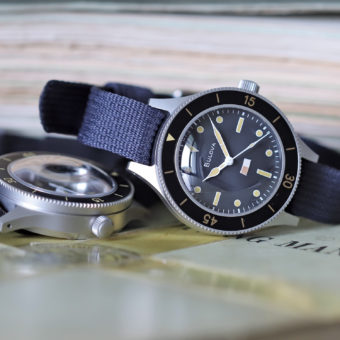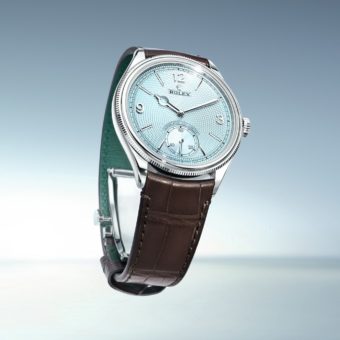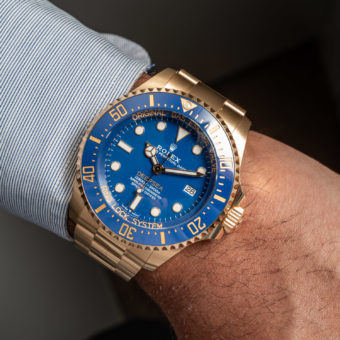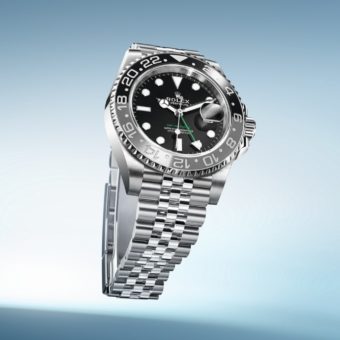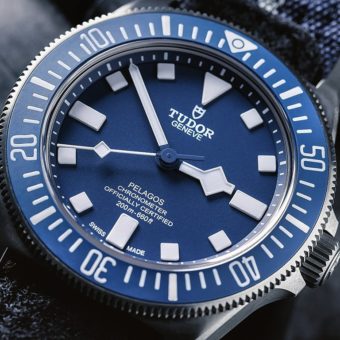With 2019 coming to a close, this week we’ll take a look at one of the most popular dark horse releases of the year: the Timex Q Timex. This watch was first revealed by the brand last spring, and was an instant hit among critics and consumers alike, for its accessible price point and retro-suave design. The watch is a reissue of a 1979 Timex model that went by the same name, and was distinguished then (as now) by its resemblance to the Rolex GMT-Master. The model features a notably boxy design with hooded lugs, a quartz movement, and a woven stainless steel bracelet, all of which together recall the spirit of ’79.

Since its initial release, Timex has sold out of the piece on at least three separate occasions, with resale prices during these periods rising by up to 50 percent. I was fortunate to snatch one up for review after the second drop of the Q Timex from the brand, adding the model to my personal collection shortly thereafter.

The new Q Timex uses a 38-mm stainless steel case with squared-off, beveled edges and contrasting brushed and polished finishing. On its side is a simple push/pull crown, while surrounding the dial is the star of the watch: the unidirectional red-and-blue-sectioned “Pepsi” GMT bezel, made of aluminum with a black plastic ring underneath which helps both to raise the bezel and to break up the monotony of the steel case.
The aluminum bezel as a whole is a great aesthetic touch, though it is not overly useful on its own — that is, without an additional, dedicated GMT hand passing over the dial. Additionally, this bezel uses a sliding rather than clicking mechanism, which makes it much more prone to accidental movement, so this may not be the best watch for someone needing to accurately keep track of another time zone on their wrist. If this is not a concern of yours, and you like the watch purely for its stylish charm — as is likely the case with most buyers — then this becomes much less an issue.

On the blue dial of the watch you’ll find a simple white outer minute ring, with a printed faux patina circle and variously shaped hour markers. At the 3 o’clock position is a day/date indicator which is set by the crown, though the movement doesn’t offer a quick-set date so you’ll find yourself manually adjusting the hands back and forth over midnight to set it correctly, which can become a time-consuming affair.
Sweeping over the dial are lume-filled circle and sword hands for the hour and minutes, respectively, while a simple red pointer is used to count the seconds. At the top of the dial is the vintage-style “Q Timex” script, while towards the bottom is simply the word “Quartz.” Powering the piece is an unnamed quartz Timex movement, for which you can notably change the 377 cell battery yourself via a “True to the Past” vintage-style battery hatch which only requires a coin to open. The Q Timex is currently in stock via Timex’s online store, as well as at select retailers worldwide, for a very affordable $179.

As far as its vintage features, the new Q Timex is a punch-for-punch reissue of the 1979 original, being updated only in the higher quality of its materials and construction, being brought up to par to the brand’s modern manufacturing capabilities. The greatest difference in the model compared to vintage quartz Timex watches is in the quality of the woven bracelet; on vintage models, the woven bracelet is a hassle, typically uncomfortable and flimsy. On the reissue, however, its quality shines, remaining comfortable throughout daily wear and able to handle rougher use. This sturdiness extends to the rest of the watch, too; vintage Timexes often feel fragile, but the new Q Timex does not, offering a significant value proposition along with its unique look.

The Q Timex release is part of a larger push by Timex to pay homage to its long history of watchmaking within its modern collection. Just this year, the company released another Q Timex model in the Q Timex Falcon Eye (which we’ll likely cover in 2020), based on another vintage model, as well as the American Documents collection, which emphasizes elements from Timex’s history in American watchmaking, specifically in Waterbury, CT. All of these releases come on the heels of the brand’s first true “neo-vintage” effort, the Timex Marlin, which attracted massive attention for its $200 price tag and mechanical movement.
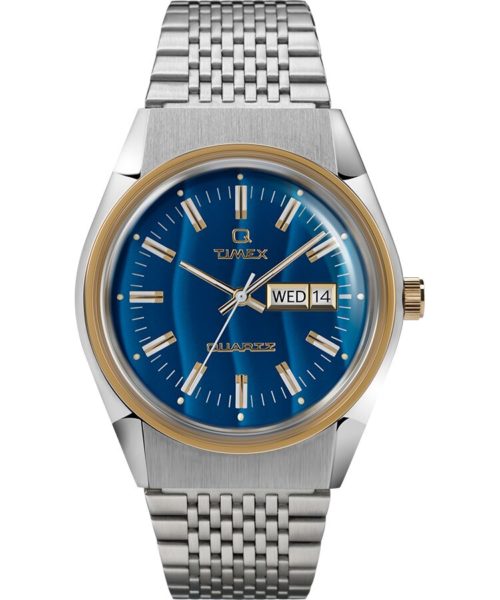
Timex since its founding has been a value-driven brand, and for many collectors and enthusiasts, Timex watches’ accessibility is what first introduced them to the world of watches. This latest Q Timex carries on this legacy, offering consumers a highly affordable, value-driven model with distinct vintage inspirations. Already the watch has attracted mass attention outside the watch space, being picked up in larger fashion and streetwear communities, and who’s to say that some of them won’t enter the watch space more seriously because of it?

For the most recent article in the “Vintage Eye” series, in which we discuss the Alpina Startimer Pilot Heritage Chronograph and the historical watches that inspired it, click here.
Caleb Anderson is a freelance writer with a primary focus on vintage watches. Since first discovering horology, he has garnered extensive knowledge in the field and spends much of his time sharing his opinions among other writers, collectors, and dealers. Currently located near New York City, he is a persistent student in all things historical, a writer on many topics, and a casual runner.

